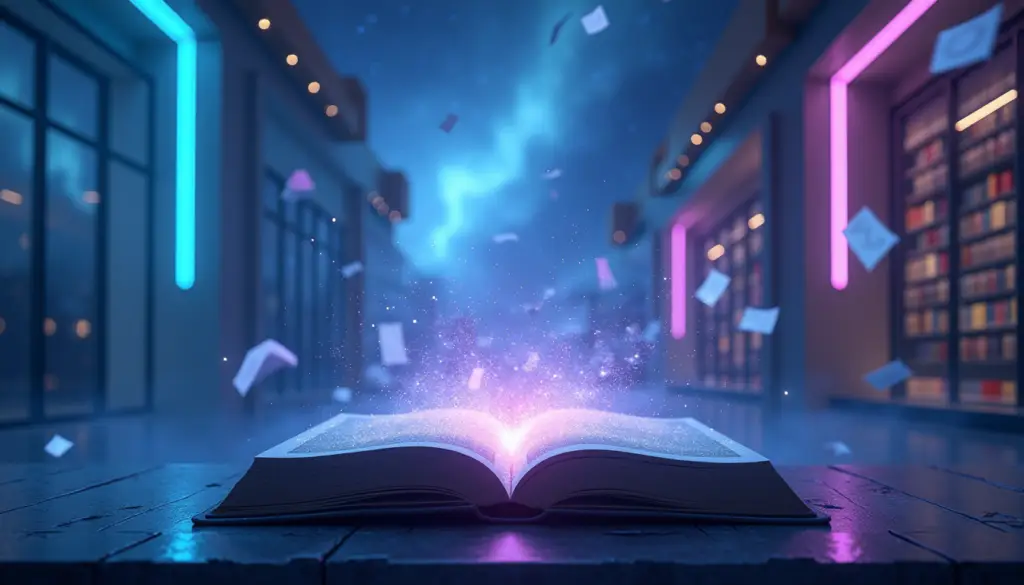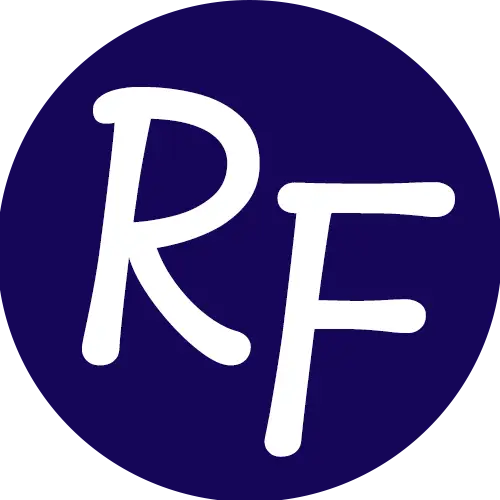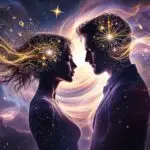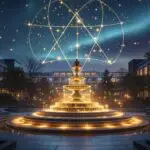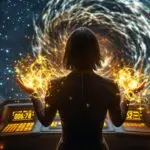Sci-Fi Themes: A Closer Look
The age-old debate of sci-fi vs fantasy continues to captivate readers and writers alike. Science fiction, where imagination meets reality, tackles the heart of what it means to be human and the structures we build around us. While sci-fi vs fantasy discussions often focus on their differences, a couple of heavy-hitters in this genre are about venturing into the unknown and pushing back against the status quo.
Exploration and Finding Yourself
Many sci-fi tales revolve around heading into uncharted territories and discovering more about oneself. Often, this comes with space journeys and run-ins with extraterrestrial beings, sparking a sense of wonder and a thirst for understanding. Such stories make us ponder our spot in the universe while pushing characters into deep and sometimes awkward self-reflection.
Remember “2001: A Space Odyssey?” It highlights the dangers and duties tied to exploring and realizing our essence when faced with the great unknown. These stories highlight our zest for knowledge while poking existential queries that pop up when we travel the vastness of space and time.
| Sci-Fi Element | Theme | Example |
|---|---|---|
| Space Travel | Risks and Duties | “Interstellar” |
| Meeting Aliens | Self-Realization | “Contact” |
| Exploring | Human Significance | “2001: A Space Odyssey” |
Breaking the Mold
Science fiction loves shaking things up, examining everything from progress’s price tag to what it means to be human and the fight for fairness. These tales peel back layers on political landscapes, biases, and ideas about freedom of choice.
Take dystopian stories like “The Handmaid’s Tale” and “1984.” They dig into the dark side of societal conventions. In contrast, tech-heavy narratives like “Blade Runner” question identity and how AI might be giving humanity a run for its money.
| Sci-Fi Element | Theme | Example |
|---|---|---|
| Dystopian Worlds | Society’s Trial | “1984” |
| Futuristic Tech | Human Identity | “Blade Runner” |
| Political Arena | Choice and Control | “The Handmaid’s Tale” |
Grasping these themes spices up the experience of both reading and creating science fiction. Whether stepping into the shoes of those exploring the unknown or challenging societal norms, sci-fi offers a unique lens on life’s tangled web.
For an extra boost on weaving these themes into your tales, peek at our article on how to write sci fi fantasy. And if you want to show off your sci-fi love with style, don’t miss our collection of sci fi fantasy clothing.
Elements of Science Fiction
The sci-fi vs fantasy divide becomes particularly clear when examining the core elements of each genre. Science fiction, or sci-fi for the cool kids, is a genre where imaginations run wild and the sky’s not even the limit. It’s all about asking, “what if?” and then taking those ideas on a wild joyride through brainscapes you didn’t even know existed. Let’s take a look at the stuff that makes sci-fi so darn irresistible.
Space Travel and Aliens
Zooming through space and bumping into aliens is sci-fi bread and butter. These tales often plunge into wormholes of curiosity and dangers lurking in the unknown. We chat about humanity’s hunger for wisdom and the whole “we’re just a tiny dot in this vast galaxy” epiphany.
Stories of “first contact” with aliens open up massive conversations about what makes us human, what ethical codes we stand by, and whether we can share this universe peacefully with beings who might have more legs than us. From the trippy visuals of “2001: A Space Odyssey” to the gritty realism of “The Expanse,” these stories hook you in big time.
Dystopian Portrayals
Dystopian sci-fi paints a pretty bleak canvas of the future, pointing a finger at what might happen if we keep messing things up socially, politically, or environmentally. These tales are like neon signs flashing a warning—wake up and smell the consequences!
They make us squirm in our seats by asking tough “what if” questions. Imagine living in Orwell’s “1984” where Big Brother knows your every move, or hustling through Atwood’s “The Handmaid’s Tale,” exploring life under gender oppression and societal breakdown.
Artificial Intelligence Exploration
AI in sci-fi vs fantasy gets you thinking about what makes us tick, who we really are, and what happens when our gadgets get a mind of their own. What’s it mean to be human when your toaster might be planning world domination in the garage? Fantasy might dive into magical realms, but sci-fi brings that futuristic fear of technology’s potential.
We’re talking gut-punching questions on consciousness and moral dilemmas over creating machines that could outthink us. Think of Isaac Asimov’s “I, Robot,” where the three laws of robotics get a good old philosophical grilling, or Philip K. Dick’s “Do Androids Dream of Electric Sheep?”—the book behind the film “Blade Runner.”
| Element | Themes Explored |
|---|---|
| Space Travel & Aliens | Curiosity dangers, Cosmic humility, Discovery |
| Dystopian Portrayals | Society & power critiques, Future possibilities |
| Artificial Intelligence | Humanity & tech interplay, Identity, Moral tech issues |
Feeling inspired? Check out our guide on how to write sci-fi fantasy to craft stories that blend these juicy themes.
Exploring Fantasy Elements
When considering sci-fi vs fantasy worldbuilding approaches, fantasy sets itself apart from the technical twists of sci-fi. These fantasy realms whisk readers away to lands of magic, mythical beasts, and rules that flip the script on reality. Jump into the fantastical world of fantasy, where wild storytelling stretches beyond imagination and sets itself apart from the technical twists of sci-fi. These fantasy realms whisk readers away to lands of magic, mythical beasts, and rules that flip the script on reality.
Worlds Apart
Fantasy usually takes readers to places far from our daily grind, offering an escape into the strange and wondrous. It’s like stealing a glimpse into what’s beyond the possible (Jonathan Fesmire). These fantastical domains set the stage for out-of-this-world adventures that laugh in the face of reality. Unlike science fiction, which tends to dabble with future Earth or altered versions of it, fantasy builds its own playgrounds with unique traits and cultures. Curious how to blend these elements? Check out our tips on how to write sci fi fantasy.
Spellbinding Magic and Menacing Monsters
Magic is at the heart of every fantasy story, steering tales and characters toward things ordinary life doesn’t offer. Unlike science fiction, which looks at gadgets and gizmos, fantasy spins magic and supernatural wonders into the storyline (Bang2Write). With intricate systems, magic comes with rules and limits that shape what happens next.
| Element | Example |
|---|---|
| Magical System | “The Wheel of Time” series by Robert Jordan |
| Supernatural Creature | Dragons in “A Song of Ice and Fire” by George R.R. Martin |
Throw in a few mythical creatures, and you’ve got a world that stretches the mind and spices up the plotline with beings beyond belief.
Mythical Lands and Offbeat Laws
Fantasy plays by its own rules, ignoring the usual physical limits that keep our feet on the ground (Bang2Write). These imagined lands follow their own mix of order and chaos, bound only by their internal logic.
| Element | Fantasy | Science Fiction |
|---|---|---|
| Setting | Separate Realm | Future or Alternate Earth |
| Governed by | Magic and Myth | Science and Technology |
| Logical Consistency | Internal Rules | Scientific Principles |
The separation between the inner workings of fantasy and the technical principles of science fiction highlights what makes each genre special. Want to see how these ideas combine, especially through fashion? Swing by our hub on Sci Fi Fantasy clothing.
Grasping these key ingredients helps both newbies and seasoned fans appreciate the magic that makes the fantasy genre so timeless and compelling, especially when comparing it to sci-fi vs fantasy elements.
Identifying Genre Differences
The sci-fi vs fantasy comparison reveals fundamental differences in how each genre approaches storytelling. Getting a grip on what sets fantasy apart from science fiction can really help readers and writers not just tell the two apart but also enjoy each genre’s cool vibes.
World-building Principles
In the ongoing sci-fi vs fantasy debate, world-building stands as a crucial differentiator. When it comes to creating the universe where the story unfolds, fantasy and science fiction take different routes. Fantasy drops you in a whole new world, with magic swirling around, mythical beasts on the prowl, and little concern for the laws of the physical universe. This place dances to its own drumbeat of logic, which is often as wild and untamed as a dream (Bang2Write).
Meanwhile, science fiction sets its stage in a future or reimagined Earth. Here, science is the magician, making the impossible possible with a backbone of real-world theories and tech, even if it’s all flying cars and androids. These settings are all about logical progression and how they shape the humans and plotlines within (Bang2Write).
| World-Building Elements | Fantasy | Science Fiction |
|---|---|---|
| Setting | Otherworldly realms | Futuristic or altered Earth |
| Governing Rules | Magic and wonder | Scientific exploration and thinking |
| Common Themes | Legends and lore | Gadgets and gizmos, ideal or grim futures |
Rule of Magic vs. Laws of Science
The biggie between these genres boils down to sci-fi vs fantasy, with magic versus science at the heart of it. Fantasy likes to spin tales around enchanted spells and mystical critters. Characters wield powers beyond human ken, make friends with dragons, or chase destiny written in the stars. The storyline bends the rules of what could be, embracing dreams over reality.
Science fiction, on the flip side, stresses cutting-edge inventions and forward-thinking scenarios. It sticks to scientific logic, even when imagining what might lie ahead. Whether it’s zipping across the galaxy or creating new forms of intelligence, it walks a tightrope across the gray zone of what’s plausible (Bang2Write).
| Element | Fantasy | Science Fiction |
|---|---|---|
| Focus | Enchanted systems and creatures | High-tech advancements and exploration |
| Governing Rules | Imagination-driven logic | Scientific possibility |
| Character Abilities | Magic capabilities, mythic beings | Advanced technology, scientific ingenuity |
Although fantasy and science fiction usually wear different jackets, some stories love to play mix-and-match. Take a look at something like Philip Pullman’s The Golden Compass where what seems magical gets a clever scientific twist in the narrative itself.
For more about diving into these genres, check out our tips on writing sci-fi fantasy and find some sci-fi fantasy clothing inspiration to help flesh out your characters.
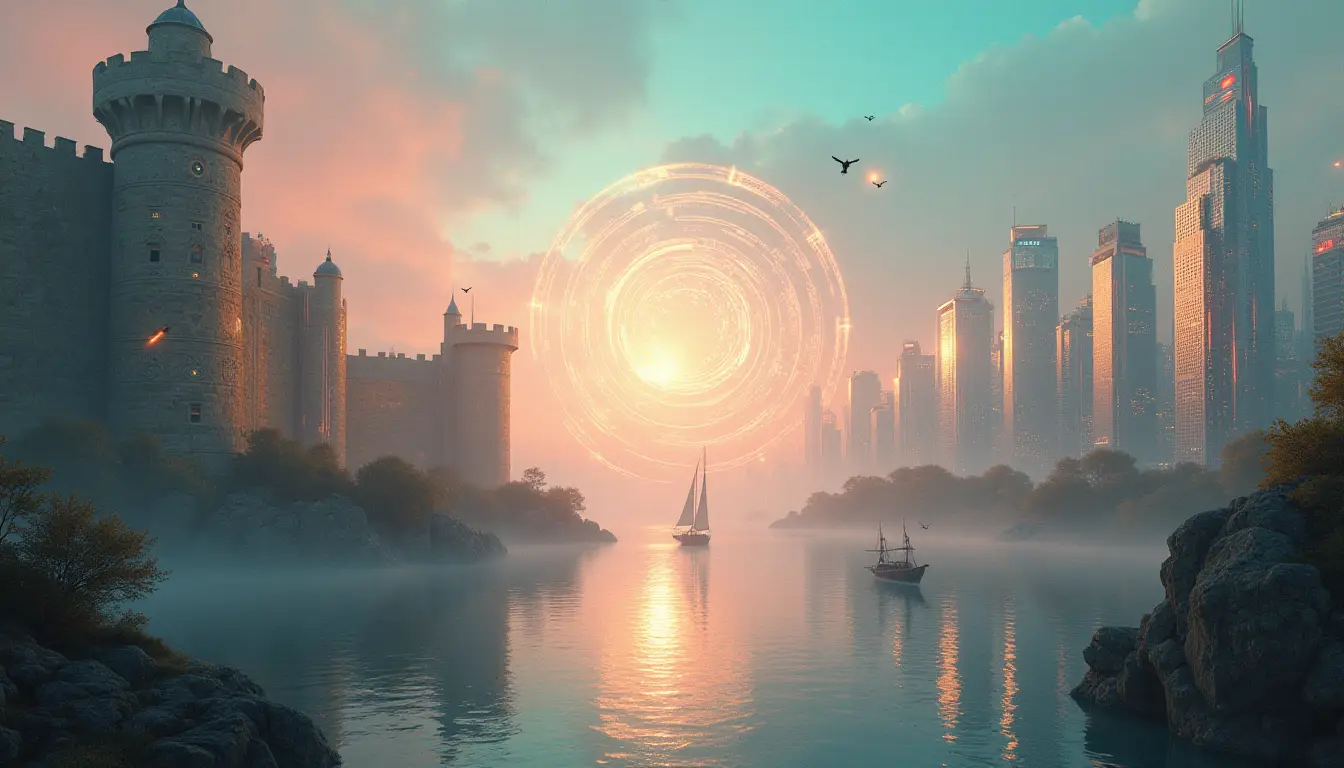
The Blurred Lines: Science Fantasy
Science fantasy, you know, it’s like that tasty mix of peanut butter and jelly, only it’s sci-fi and magic coming together like two old pals. While the sci-fi vs fantasy distinction often seems clear-cut, science fantasy proves there’s room for both in a single story. This mash-up cooks up tales that dig into tech, mysticism, and what makes us human—all that wouldn’t fly if you stuck to just one script.
Blending Science and Magic
In this playground of science fantasy, what’s possible and not possible is like a kid doodling outside the lines. Don’t mix up regular fantasy, which sticks to magic and mythical folks, or straightforward science fiction centered on tech and science mumbo jumbo. Science fantasy mashes it up. Just ask any character or reader dealing with stories that juggle these worlds. There’s a lot of explaining to do so you don’t get lost in the mix (Screen Rant).
Take Philip Pullman’s “His Dark Materials” for a spin. This ain’t your usual magic show; here, otherworldly powers are grounded in some hardcore logic. It’s a fresh twist that keeps folks turning pages. Meanwhile, George R.R. Martin’s “A Song of Ice and Fire” sticks dragons and spellwork right under your nose with a consistency that makes his world tick.
The trick for this genre is nailing down an internal logic where both science-y tech and magic stuff fit snugly. Whether tech looks like magic or spells get a scientific facelift, the story’s gotta make sense on its terms.
Navigating Dual Realities
Juggling science and magic ain’t no walk in the park. This balancing act opens the door to stories that go beyond the cut-and-dry of single genres. Writers must build places where the unthinkable happens, but it all feels normal.
Think about sci-fi-fantasy clothing with gadgets sewn next to ancient symbols. It creates a vibe that matches the genre’s mash-up of old and new.
What really lights up these dual adventures is how characters move through them and how the worlds are fleshed out. For example, a hero might wield a gadget that shoots out magic like it’s all one big package deal. This mix boosts the storyline and ups the stakes, making what the characters do more impactful.
Here’s a look at some well-known science fantasy tales and their key ingredients:
| Title | Author | Key Ingredients |
|---|---|---|
| “His Dark Materials” | Philip Pullman | Supernatural skills & hard facts |
| “A Song of Ice and Fire” | George R.R. Martin | Dragons, spells & backstabbing |
Tales straddling the science and magic line need a steady hand to keep both spinning without tripping over the genre’s weaknesses (Screen Rant). This mix gives life to the stories, making science fantasy a goldmine for writers looking to explore and readers ready to be amazed.
Crafting the Perfect Blend
Understanding the sci-fi vs fantasy dynamic is crucial when attempting to blend these genres. Mixing fantasy with sci-fi—like peanut butter with jelly—takes skill, creativity, and a bit of nerve. These two-story types work best when filled with memorable characters and well-built worlds, held together with solid rules and constant logic.
Singular Characters and World-building
Think of your favorite sci-fi or fantasy tale. Got it? Bet it has unforgettable characters and an awesome world. These stories are like giant, weird playgrounds where the fun happens. Characters aren’t just heroes but the emotional glue to these alternate realities.
In sci-fi fantasy mixes, your hero is everything. Take Lyra in The Golden Compass by Philip Pullman. She’s not just a girl on a quest; she’s how the magic-science combo plays out (Screen Rant). They make those wild and crazy places feel like home.
A world worth diving into needs details. Yes, the work’s in the little things. You need to paint pictures of cultures, lands, tech, and magic like an artist. Fantasy leans on magical wonders and age-old creatures, while sci-fi dazzles with cool tech and yet-to-exist inventions (Bang2Write).
Internal Logic and Consistency
Keep things believable, and your readers will stick around. The sci-fi vs fantasy approach to internal logic differs significantly: while magic might play by its own rules, sci-fi stands on science’s shoulders—even if it takes liberties.
When worlds collide, like science meets spell-casting, clear how they tango together. Pullman’s The Golden Compass shows how what seems like magic can have a nerdy, science-like explanation (Screen Rant).
Sticking to the set ground rules is golden. It avoids turning belief suspension into confusion, keeping readers hooked without falling into plot hole traps. Your story’s rules must weave magic and science into a seamless tapestry, revisiting those rules to keep readers grounded.
| What’s What | Fantasy Style | Sci-Fi Angle |
|---|---|---|
| Driving Forces | Magical lands, otherworldly antics | Science perks and tech wizardry |
| Inner Workings | Its rules may mock physics | Closer to science, with room to dream big |
| Standout Characters | Heroes may have reality-bending powers rooted in myth | Pioneers in tech-loaded universes |
| Building Worlds | Spells weaving through lands loaded with history | Tech-laced futures painted with words |
Nailing this mash-up creates a one-of-a-kind vibe for readers looking to enjoy the best of both fantasy and sci-fi shores. Curious to know more about blending these worlds? Snoop around on how to write sci-fi fantasy.
The Perfect Blend: “The Convergence: Broken Magic”
As the sci-fi vs fantasy boundaries continue to blur, works like “The Convergence: Broken Magic” show how these genres can complement each other. This novel expertly weaves together advanced technology with magical systems in a way that feels both innovative and internally consistent. The Federation’s crystalline technology works to control and separate magical forces, while the natural flow of unified magic suggests ancient powers remembering their true nature.
What sets this story apart is how it handles the classic sci-fi vs fantasy challenge of combining technological and magical elements. The Academy’s seven towers aren’t just architectural marvels—they’re physical manifestations of how institutional power uses technology to control magical forces. The story explores what happens when these artificial separations begin to break down, and reality itself remembers its original state.
The character arcs of Samantha Reed and Connor Blake perfectly demonstrate the tension between technological control and natural magical harmony. Their journey challenges readers to question whether maintaining order through artificial separation is worth the cost of losing something fundamentally whole.
Through its unique approach to magical systems and technological control, “The Convergence: Broken Magic” offers a fresh perspective on the sci-fi vs fantasy debate. It asks profound questions about the nature of power, control, and the price we pay for maintaining artificial divisions.
Ready to explore this innovative blend of science fiction and fantasy? Order “The Convergence: Broken Magic” on Amazon today and discover what happens when reality itself rebels against artificial control.

